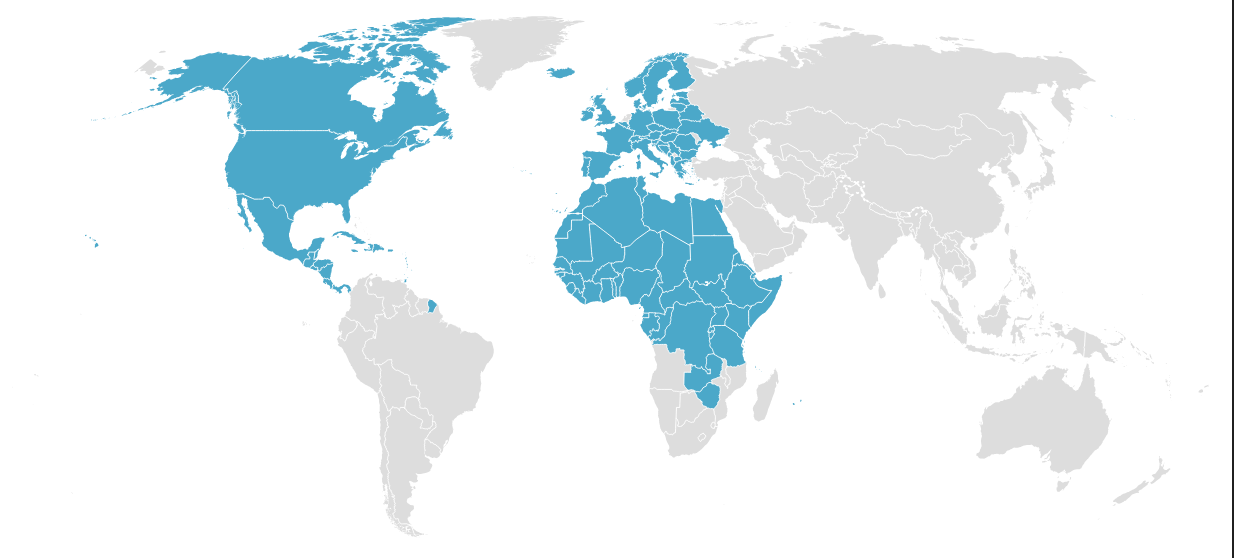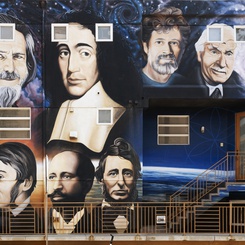When we talk about offsetting climate change, we often think about planting trees, as they absorb C02, or about other carbon capture and storage methods. While these strategies have potential, they are not realistic for combating global warming if we plan to continue burning fossil fuels.
When we buy a plane ticket, the airline often offers us the option to pay a bit more to fund tree-planting to offset our flight’s emissions. This luxury allows the 2-4% of our planet’s frequent flyers to reduce their carbon emissions and soothe their conscience. Could we extend this option to the rest of our economy? Can we really keep on merrily emitting CO2 and hope to make up for it later? This question is becoming increasingly urgent as we are currently above a 1.5°C rise in temperature since the industrial revolution.
In our new study, published in Nature's Communications Earth and Environment, we show that trying to compensate for CO2 emissions is far too costly to be a viable solution. For example, capturing CO2 directly from the atmosphere is estimated to cost around 1000 € per tonne, according to estimates from projects like Climeworks in Iceland. This technology uses giant fans that capture CO2 from the atmosphere. Where does it go after that? Norway recently unveiled the installation of a CO2 capture and storage project below the seabed off the Norwegian coast. Is this really a solution for continuing to pollute, without harming the planet?
We estimate that the 200 biggest oil and gas companies would produce around 673 gigatons of CO2 by burning their stocks of petrol, gas and coal. These numbers are pulled from their annual reports and form the basis of their financial valuation. Their shareholders know that these reserves are why their stocks make them money.
The sky-high cost of carbon capture and storage
The problem, as our study shows, is that it would cost around 673,700 billion euros, or almost seven times the world's GDP, to offset the current reserves of gas, oil and coal companies. This implies that if we wish to continue polluting until we have exhausted fossil fuel reserves, we would have to pay for the equivalent of seven years' worth of the world's entire production.
It’s not a profitable calculation for fossil fuel companies, either. For Total Energie and their stocks of 4.25 gigatons of CO2, the price of 1000 EUR/ton means it would cost around 4253 billion euros. That’s around 34 times their market value, currently estimated at around 126 billion euros.
In our study, we call this net environmental value, meaning the value of a fossil fuel company once the CO2 contained in its reserves has been offset. As soon as the price of offsetting a ton of CO2 exceeds $150, the net environmental value of the 200 biggest fossil fuel companies becomes negative. In other words, if fossil fuel companies had to offset their emissions, they'd all go out of business. Fortunately for them, no such legislation currently applies. Some companies have realized this and have begun to invest in green energy technologies.
For tree-planting to offset emissions, we’d need to cover North America in greenery
There are, however, more affordable solutions, such as the one offered onboard planes: planting trees. According to an OECD study, the cost is minimal, at around $16 per tonne. This cost does not include the cost of the land: planting trees in Manhattan is probably more expensive than planting them in Missouri.
Trees are generally half carbon. For many tree species, this sequestration is most effective during the first 20 years of growth. For trees to capture carbon, they must not be cut down or burned, which would release all the captured carbon. When we plant our trees, we have to make sure we don’t disrupt the existing ecosystem. So can we save the planet by planting trees?
In our study, we used averages for carbon capture by tree, depending on the regions where they would be planted, by 2050. If we wanted to offset the potential emissions from all gas, oil and coal reserves, we would need to plant trees over a very large area, and some geographical areas are more conducive to carbon capture than others. One of our estimates is that we'd need to cover around 27 million square kilometers, or the whole of North and Central America plus part of South America. This would mean replacing all buildings, roads and lakes, and planting trees everywhere, not counting those already growing.
Area required to offset potential CO₂ emissions from available fossil energy reserves with tree plantations
Of course, this idea is absurd: but the map allows us to see the sheer size of the area represented. In other words, even if planting trees is indeed an effective carbon capture method, it’s not a viable one when we consider the size of the oil, gas and coal reserves currently held by fossil fuel companies.
If we develop our idea a bit further, by trying to plant enough trees to compensate all the CO2 that has already been emitted throughout history, our mega forest now needs to cover Europe and almost all of Africa, from the Mediterranean coast to Zimbabwe, in addition to North America.
Area required to offset historical CO₂ emissions through tree plantations

These solutions are useful but ultimately ill-suited without changes to our emissions
Clearly, carbon offsetting is not a magic wand. The available technology is much too pricey and the process of transporting the carbon from its emission site to the storage site, i.e. from France to Norway, generates emissions itself. Natural solutions, like planting trees, are preferable.
That being said, we don’t have enough room for this megaforest. The solution, of course, is to emit less. For sectors in which decarbonization is complicated, such as metallurgy, the chemical industry or agriculture, we must first reduce polluting activities, and compensate for those that remain necessary. Carbon offsetting must therefore remain a last resort, and not the default solution, to reduce human emissions in a world currently at + 1.5°C and continuing to heat up.
Further reading
Naef, A., Friggens, N. L., & Njeukam, P. (2025). Carbon offsetting of fossil fuel emissions through afforestation is limited by financial viability and spatial requirements. Communications Earth & Environment, 6(1), 1-11.
This article was republished from The Conversation France with the Creative Commons license. Read the original article here.


.png)







